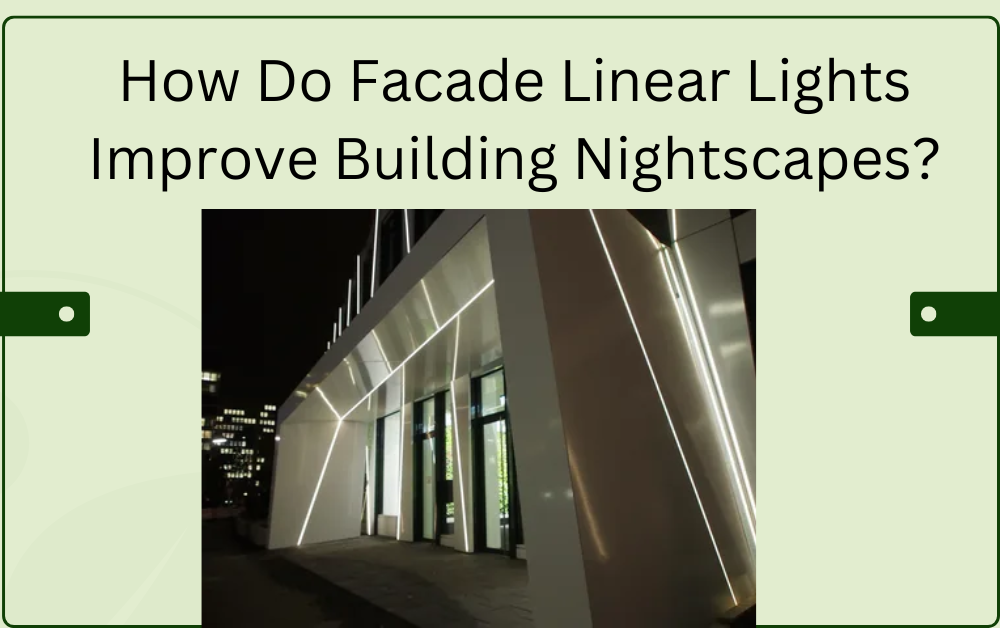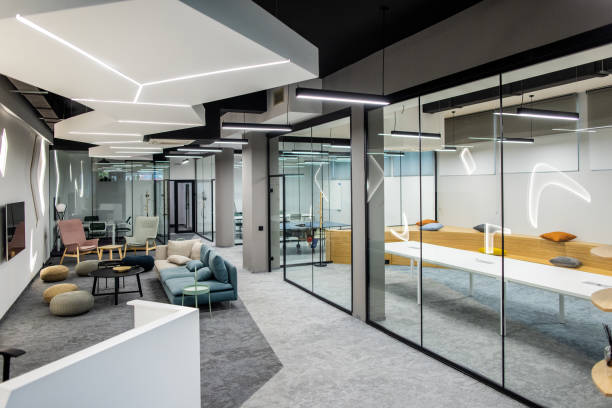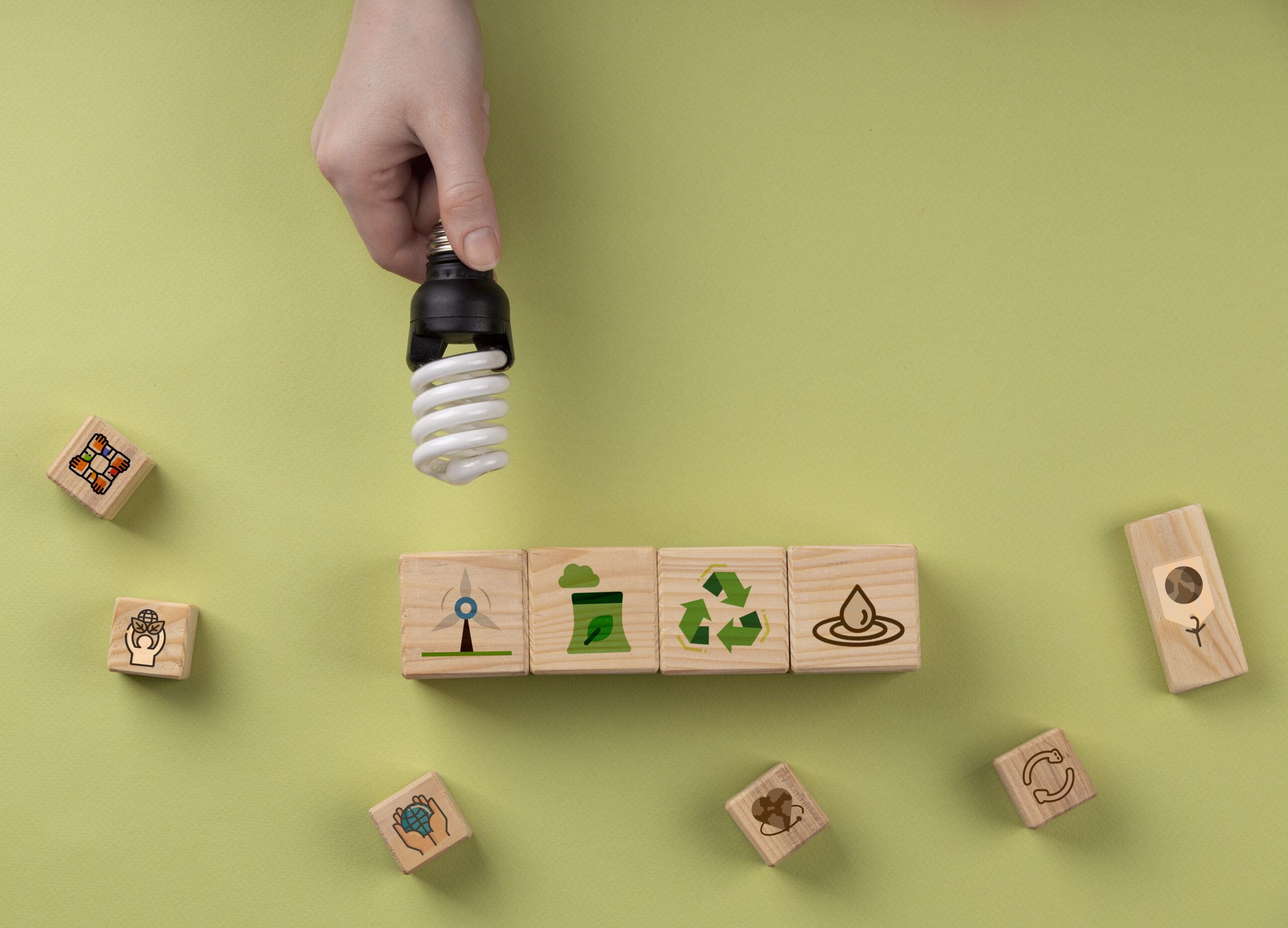Facade linear lights have become a key element in architectural lighting design, particularly for improving the aesthetics and functionality of building nightscapes. With the rise of modern architecture and urbanization, the use of lighting to enhance the visual appeal of structures after dark has become an essential tool for architects and designers. Facade linear lights play a crucial role in transforming a building’s exterior into an eye-catching masterpiece that stands out against the night sky. These lights are not just functional; they are a statement of design that showcases the building’s features in a sophisticated and dynamic way.
The Power of Facade Linear Lights in Modern Architecture
Facade linear lights have transformed how architectural elements are perceived at night. Their flexibility and precision allow designers to highlight specific features of a building’s facade, such as the texture of the walls, the alignment of windows, and the unique curves or angles of the structure. These lights add an element of depth and dimension to the building’s exterior, turning a simple structure into a striking piece of art when viewed at night.
The versatility of facade linear lights enables architects to choose from a wide range of color temperatures, brightness levels, and mounting options. This adaptability makes them suitable for different types of buildings, from sleek modern designs to traditional architectural styles. Whether for a corporate office, a luxury hotel, or a historical landmark, facade linear lights can be customized to create the desired effect, improving both the aesthetic appeal and functionality of the nightscapes.
NOTE: Facade linear lights have been increasingly used in architectural designs to create impactful nightscapes. Star Facade Lighting has led the way in providing high-quality lighting solutions, making buildings shine after dark.
Enhancing Building Visibility and Safety
One of the key reasons why facade linear lights are so impactful in improving building nightscapes is their ability to enhance visibility. Proper lighting not only ensures that the building is visible from a distance but also highlights the architectural details that might otherwise go unnoticed at night. This is especially important for buildings in urban environments, where visibility can be a challenge due to surrounding lights from streets and other structures.
Moreover, facade linear lights contribute to safety and security. A well-lit building is less likely to attract criminal activity, as it reduces dark areas where intruders could hide. Lighting can also help guide visitors to entrances and important areas of the building, making the space safer for pedestrians and occupants alike.
Creating Dramatic Effects with Facade Linear Lights
Facade linear lights are known for their ability to create dramatic effects that transform the atmosphere of a building after dark. By utilizing different angles, intensities, and colors of light, designers can craft mesmerizing lighting effects that enhance the building’s features and make it appear more dynamic and alive. The linear shape of the lights contributes to smooth, uniform lighting across large surface areas, which is ideal for creating striking visual patterns on facades.
For instance, vertical or horizontal lighting lines can emphasize the height or width of a building, while spotlighting specific architectural features like columns or entryways can create focal points. Moreover, the shadows cast by these lights add depth and texture, providing a sense of movement and energy. This creates a stark contrast with the surrounding dark environment, making the building stand out dramatically and catching the attention of passersby.
Energy Efficiency and Sustainability
In today’s world, sustainability is a top priority in design, and facade linear lights offer an eco-friendly solution to building illumination. LED technology, which is commonly used in facade linear lights, is energy-efficient and long-lasting. LED lights consume less power compared to traditional lighting solutions, significantly reducing energy costs while still providing bright, high-quality illumination. The low energy consumption of LED lights aligns with the growing trend of green building designs, where environmental impact is a key consideration.
Additionally, LED facade linear lights have a longer lifespan, meaning less frequent maintenance and replacements are required. This not only saves on operational costs but also reduces the amount of waste generated from old, discarded bulbs. The durability and longevity of LED lights contribute to the overall sustainability of a building’s lighting design, making them an ideal choice for those looking to minimize their environmental footprint.

Customizing Lighting to Match Architectural Themes
Another advantage of facade linear lights is their ability to be tailored to suit the specific architectural style and design of a building. These lights can be used to complement a building’s overall aesthetic, whether it’s a sleek, modern skyscraper or a classic, traditional structure. The versatility of facade linear lights allows for a wide range of customization, ensuring that the lighting enhances the building’s unique features rather than overshadowing them.
For example, in modern architecture, linear lights can create clean, minimalist lines that emphasize the building’s sleek, angular design. For more classical buildings, warmer-colored lights can be used to complement the historic materials like stone or brick, adding a softer, more inviting glow to the facade. This level of customization makes facade linear lights a versatile tool for any architect or designer looking to create a personalized lighting solution that reflects the identity of the building.
Improving Branding and Identity
Facade linear lights also play an essential role in reinforcing a building’s branding and identity, particularly for commercial properties. For businesses, the building’s exterior is often the first point of contact with potential clients or customers. A well-lit facade not only enhances the building’s appearance but also sends a message of professionalism, reliability, and innovation.
For instance, companies in the hospitality industry often use facade lighting to create a welcoming atmosphere that reflects their brand’s values. Hotels and resorts use lighting to highlight their architectural elements, creating an inviting exterior that draws guests in. Similarly, corporate offices may use facade lighting to project a modern, forward-thinking image, with clean lines of light that symbolize efficiency and innovation.
The Future of Facade Linear Lights
As technology continues to advance, the future of facade linear lights is undoubtedly promising. Emerging innovations, such as smart lighting and automation, are changing how lighting can be controlled and adjusted. With the rise of Internet of Things (IoT) devices, facade lighting can be integrated into a building’s overall smart infrastructure, allowing for remote control, energy management, and real-time adjustments based on environmental factors.
In addition, advances in color-changing LED technology are enabling more dynamic and expressive lighting displays. This provides even greater opportunities for designers to create captivating effects that can evolve throughout the evening, from subtle lighting to more vibrant, colorful displays. Such innovations will only enhance the impact of facade linear lights, making them an even more valuable tool for architects and urban planners.
Conclusion
Facade linear lights have proven to be an invaluable addition to modern architectural design, enhancing building nightscapes with their versatility, energy efficiency, and dramatic effects. From improving visibility and safety to creating stunning visual effects, these lights offer a myriad of benefits that go beyond mere aesthetics. Their ability to customize the lighting to match the building’s architectural style ensures that they remain a relevant and vital part of contemporary design.
For those looking to elevate their building’s exterior, facade linear lights offer a cost-effective, sustainable, and visually striking solution. As technology continues to evolve, the future of facade linear lights is poised to offer even greater opportunities for innovation, allowing architects and designers to push the boundaries of creativity and design.
For More Insightful Articles Related To This Topic, Feel Free To Visit: viewsparrow











